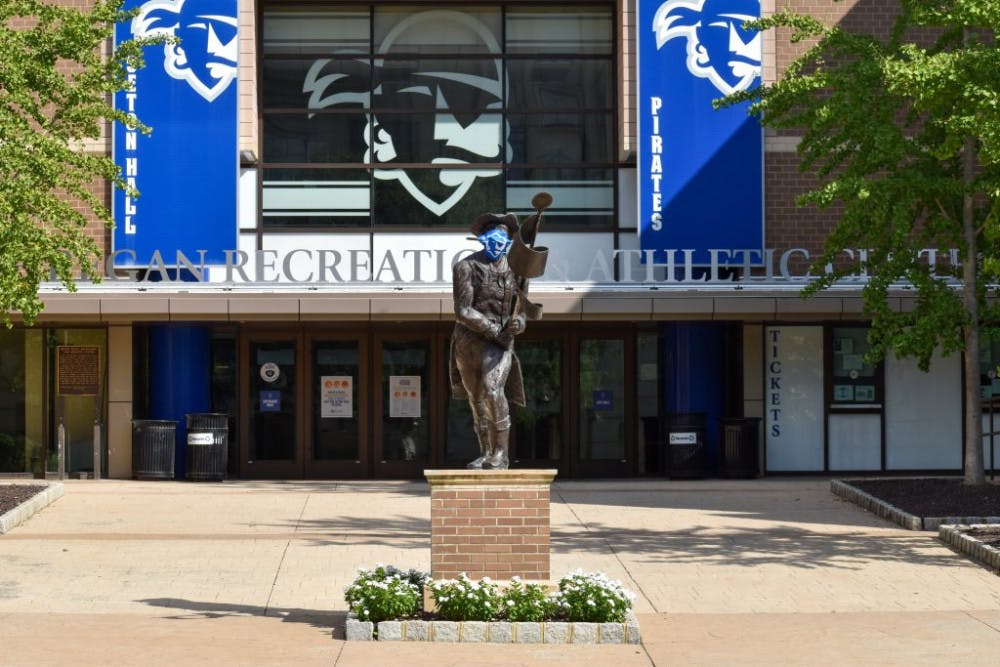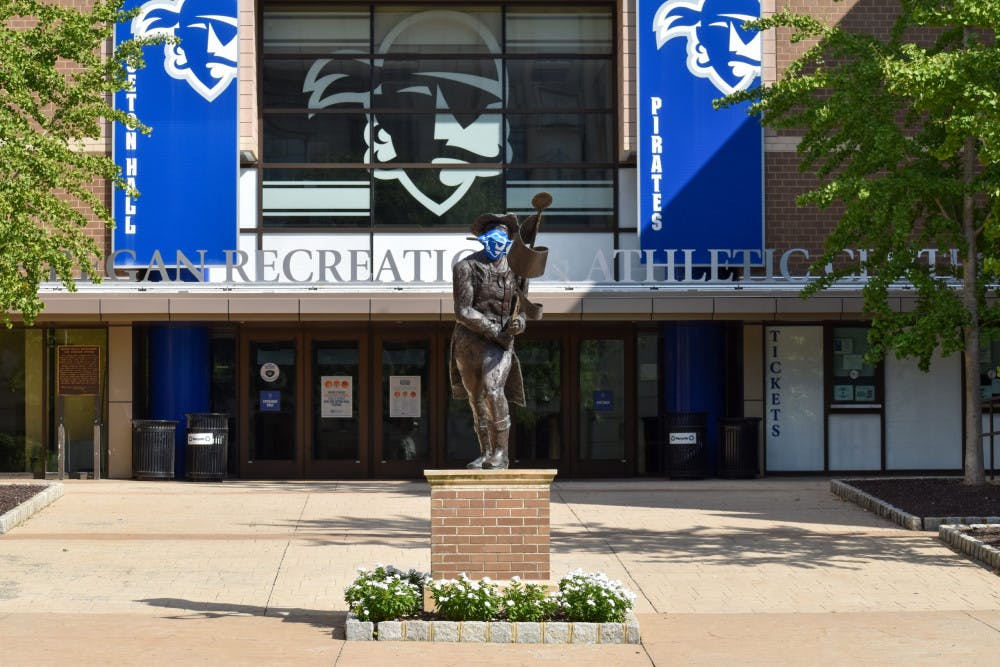This is a breaking news story. Check back later for more updates.
UPDATE -- Oct. 25 @ 3:00 pm: South Orange Office of Emergency Management (OEM) Coordinator Scott Egelberg said in a statement to The Setonian that while the Village is "definitely concerned about the recent cases," there is still no reason to believe there are "any additional risks to the South Orange community at large."
Seton Hall’s Health Intervention and Communication Team (HICT) confirmed on Sunday via email that it has detected two clusters that spread COVID-19 among the student population in South Orange, one in the Athletic Department and another within a Greek Life organization.
It is currently unclear how many students are involved in each cluster, but according to a Setonian analysis of the HICT dashboard, the University has detected 11 cases that were reported as being “related” or found through contact tracing.
The University declined to name which Greek organization or athletic teams make up the two clusters, nor did it say if they were tied to any specific event.
In the email, which was signed by HICT co-chairs Matthew Borowick (’89) and Dr. Shawna Cooper-Gibson, the University said that it did not feel the current rate of cases warranted a pivot to fully remote instruction, though noted that “additional clusters may well require such action.”

So far, Seton Hall has not made public the criteria it would use to determine when to pivot to fully remote learning. But in an August email from Director of Health Services Diane Lynch obtained by The Setonian through a public records request, Lynch told South Orange Village Health Office John Festa that the University has pivot plans.
“We also have pivot plans so if we get into a situation where we can't maintain appropriate isolation and quarantine of students, we would pivot to remote and we would go to a break housing mode where most students would return home,” Lynch said in the email dated Aug 21. “There's a lot in between to mitigate this happening so fingers crossed we will make it to Nov. 24th.”
With Halloween later this week, the University also warned against any on or off campus gatherings, saying that limiting them is “imperative” to halting the spread of the virus.
In the last week alone the University reported 20 cases detected in off-campus students, accounting for the lion's share of coronavirus cases since Oct. 18.
The announcement of the two clusters comes just hours after the University reported eight new cases overall on Sunday morning – seven of which were linked to tests administered on Saturday.
Seton Hall is not the first University in the state to experience a coronavirus outbreak.
Other schools, like Monmouth University in Ocean County, have also seen upticks in case counts during October. Monmouth recorded as many as 193 active cases at its peak on Oct. 6.
According to a statement from Monmouth University President Dr. Patrick Leahy, an “overwhelming majority” of the cases at that time could be traced back to an off-campus event hosted two weeks prior, which Leahy classified as a “superspreader event.”
On Oct. 14, Fairleigh-Dickinson University reported five additional cases of the virus on its Metropolitan Campus in Teaneck, which the University said stemmed “from an off-campus party,” as well, that was held the weekend prior. In the most recent update on Oct. 21, Fairleigh-Dickinson only reported two additional cases.
Nicholas Kerr can be reached at nicholas.kerr@student.shu.edu. Follow him on Twitter @nickdotkerr.





